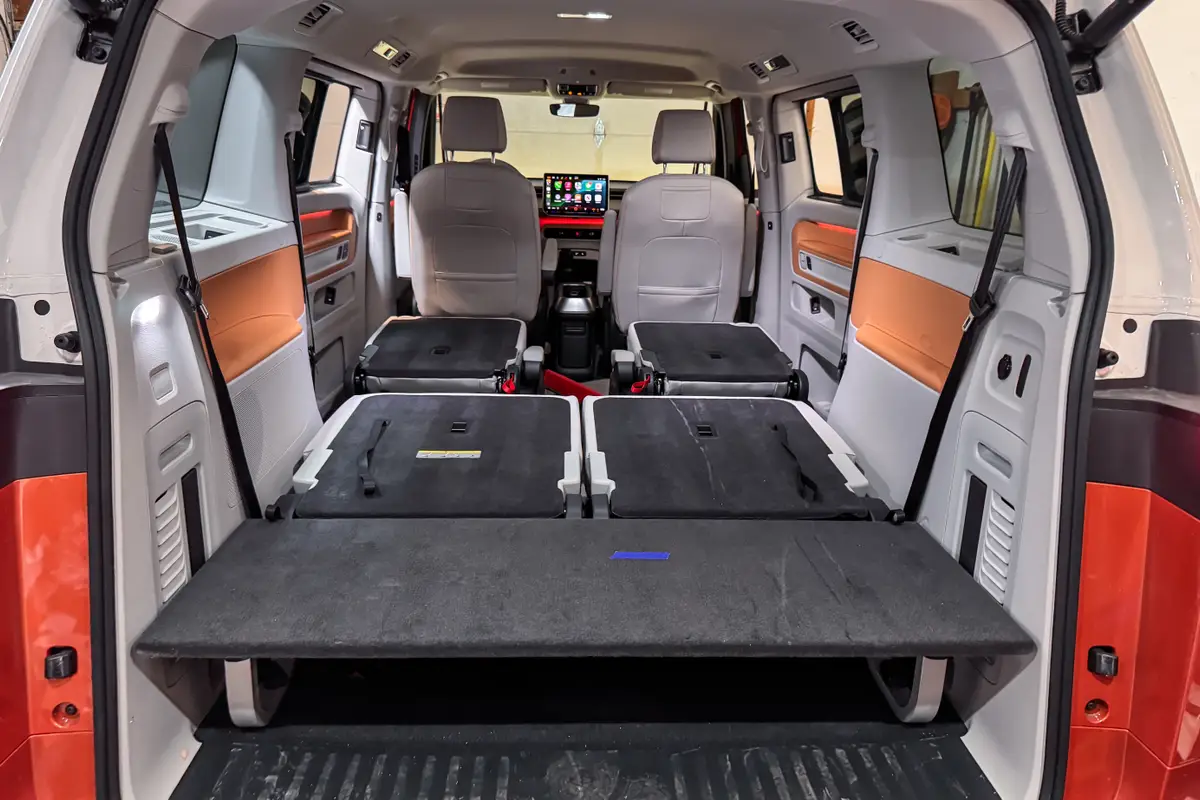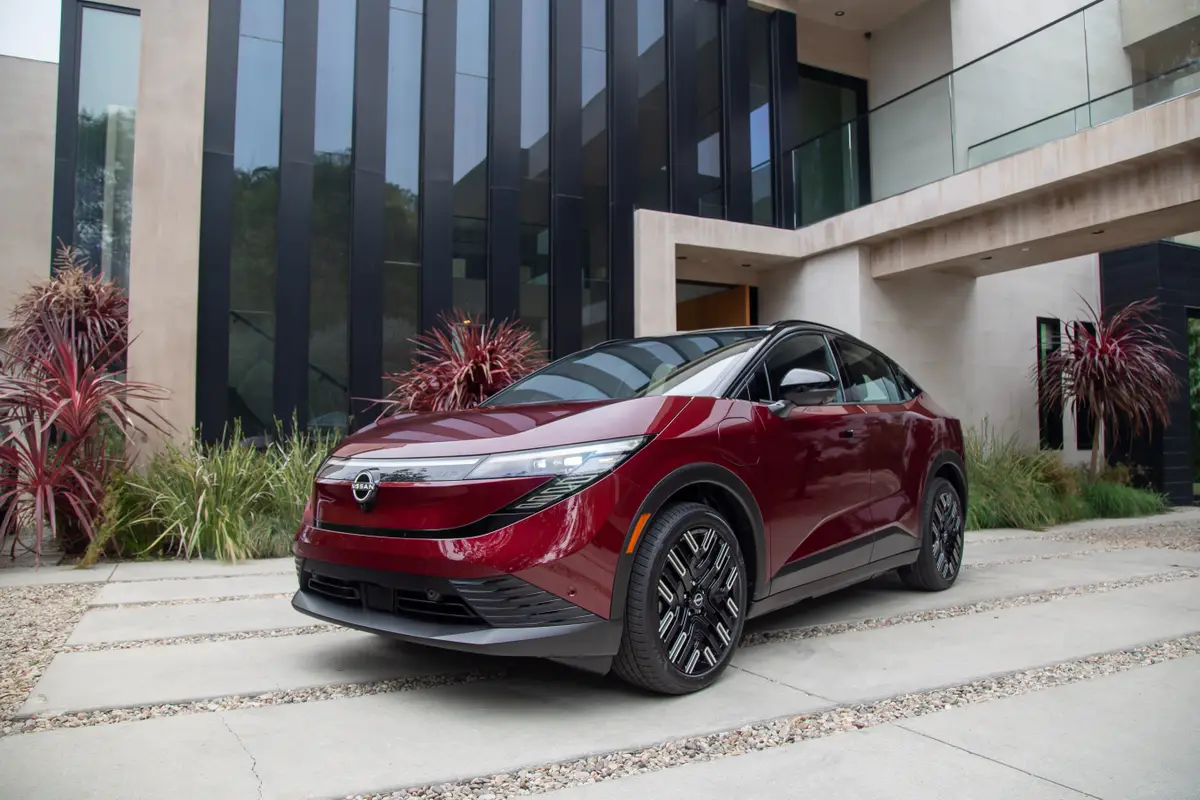Ford’s Super Bowl Ad Portends Future Car Cabins
By Cars.com Editors
February 7, 2017
Share

CARS.COM — Notice anything peculiar during Super Bowl 51? No, we’re not talking about the historic collapse of the Atlanta Falcons and improbable victory of the New England Patriots. We’re referring to Ford’s glimpse into the future of car cabins thanks to a Super Bowl commercial that briefly showed a highly futuristic interior of a self-driving automobile.
Related: Super Bowl Auto Ads Drive Shoppers
The TV spot is part of Ford’s push toward reinventing itself as a mobility company, an automaker deeply invested in electric vehicles, ride-hailing companies, car-sharing, self-driving systems and even bike-sharing.
Why Should I Care? Ford’s latest marketing message came wrapped in a cute commercial, one that featured people stuck in all sorts of sticky situations, like being stranded on a ski lift, stuck in a pet door, or attempting to restart a boat with no help in sight. The scene with the self-driving car featured two people facing each other in the front of a car: Ahead of them is a nearly featureless dashboard, with what looks to be a vestigial steering column, minus any visible wheel. Above that, a 3-D projection of the vehicle’s speed, navigation and other functions is displayed on an expansive windshield.
The cabin in Ford’s commercial brought to mind BMW’s own vision of future car interiors, which we experienced firsthand at this year’s Consumer Electronics Show in Las Vegas. That concept, which included a centrally located holographic display along with sonic waves to pulse your fingertips when choosing a command, shows that automakers — and mobility companies — are thinking along the same lines when it comes to what (and how) you’ll be driving in the years to come.
&&&&&EMBEDDED_ELEMENT_START&&&&& {“assetType”:”CARSYoutube_C”,”id”:1420693339280,”name”:”2017 Super Bowl Ford”,”updatedby”:”JenniferGeiger”,”updateddate”:1486410488807,”youtube_url”:”HhtHflDrnAU”,”youtubeUrl”:”HhtHflDrnAU”,”associations”:{}} &&&&&EMBEDDED_ELEMENT_END&&&&&
Self-Driving Cars Are Smartening Up, Fast!
The test scores are in, and the results look promising for the self-driving class of 2016. California’s Department of Motor Vehicles has published a report that ranks self-driving car behavior, particularly the number of times human intervention is needed during autonomous driving mode. These incidents, registered as “disengagements,” occur when the self-driving operation is unable to cope with a particular situation. This might result from a variety of factors, such as road construction, irregular lane markings or inclement weather that confuses a self-driving vehicle’s sensor array.
The reasons weren’t given; only the hard numbers regarding how many times manual control was needed when an autonomous drive system couldn’t cope. Covering roughly a two-year span, the report showed noticeable improvements were made and the latest self-drive prototypes need much less human interference.
Why Should I Care? We understand self-driving cars are going to need plenty of practice. We also want to see verifiable evidence showing this technology is steadily improving rather than relying on overheated marketing and overhyped promises about our cars driving us. They might — someday — but right now they require smart engineers and lots of data sharing to make them safe and reliable.
Of the companies listed in the report, Google’s self-drive unit, now called Waymo, showed some of the biggest gains. In 2015, during more than 424,000 miles of driving on public roads, Google/Waymo’s fleet registered 341 “reportable disengages.” The following year, despite recording over 635,000 total miles, the number of reported disengagements dropped to 124. That’s still a sizable error rate, but it’s a definite step in the right direction and bodes well for an even better 2017.
NASA Engineer Joins Uber’s Flying Car Program
Uber Elevate is taking another step toward reality with the addition of a 30-year veteran of NASA, an engineer with specific expertise in the field of vertical takeoff and landing vehicles. According to Bloomberg News, Mark Moore, now formerly of NASA, is helping Uber with its plans to promote VTOL aircraft as a viable transportation in the years to come.
For the record, Uber isn’t planning on building planes — at least, not yet. The ride-hailing giant wants to study mobility solutions; in this case, that means making use of real estate in the sky. We detailed Uber’s lofty ambitions last year and offered the same disclaimer that your next ride wouldn’t drop out of the sky like a DeLorean piloted by Doc Brown. Uber wants to become a think-tank, where innovative ideas such as flying cars — sorry, VTOLs — are part of the conversation.
Why Should I Care? Admit it, you probably made the Jetsons car noise at some point while reading this story. Flying cars have been around for decades and the idea isn’t going away anytime soon. The fact of the matter is that the technological and regulatory hurdles for them are daunting: First, you must make them cheap enough to not be playthings only for the super wealthy. Then, an entirely new system of licensing, registration, insurance, and driving rules will need to be drafted. When merging, who has the right of way when you’re dodging a drone and trying to steer around skyscrapers?
It sounds silly, but at some point in history, the idea of horseless carriages seemed pretty hilarious, too.
Featured stories

By Joe Bruzek
June 13, 2025


By Conner Golden
West Coast Bureau Chief

By Conner Golden
June 17, 2025
